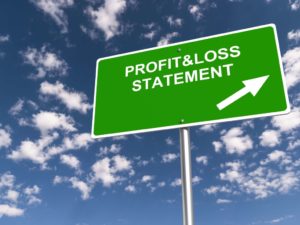Warning: Trying to access array offset on value of type bool in /var/www/wp-content/themes/enfold/framework/php/function-set-avia-frontend.php on line 536
Debt-to-Asset Ratio: Calculation and Explanation

Thus, lenders and creditors will charge a higher interest rate on the company’s loans in order to compensate for this increase in risk. As with all financial metrics, a “good ratio” is dependent upon many factors, including the nature of the industry, the company’s lifecycle stage, and management preference (among others). The debt ratio doesn’t reveal the type of debt or how much it will cost. The periods and interest rates of various debts may differ, which can have a substantial effect on a company’s financial stability.
Debt-To-Assets Ratio: Meaning, Formula, And What’s A Good Ratio
In addition, the debt ratio depends on accounting information which may construe or manipulate account balances as required for external reports. For example, in the numerator of the equation, all of the firms in the industry must use either total debt or long-term debt. You can’t have some firms using total debt and other firms using just long-term debt or your data will be corrupted and you will get no helpful data. Investors in the firm don’t necessarily agree with these conclusions.
- As is the story with most financial ratios, you can take the calculation and compare it over time, against competitors, or against benchmarks to truly extract the most valuable information from the ratio.
- As a result, drawing conclusions purely based on historical debt ratios without taking into account future predictions may mislead analysts.
- A ratio that is less than 1 or a debt-to-total-assets ratio of less than 100% means that the company has greater assets than liabilities.
- Debt to asset ratio, although an important ratio, has its limitations.
- Understanding each company’s size, sector, and goal is pertinent to interpreting its ratio.
- A lower debt-to-assets-ratio can indicate that your business is better at managing funds.
How to analyze your small business debt-to-asset ratio

If the debt has financed 55% of your firm’s operations, then equity has financed the remaining 45%. Furthermore, companies with higher debt-to-asset ratios encounter an issue of limited access to capital from the market, as investors typically seek lower ratios. Moreover, banks are unlikely to extend further financial assistance to such companies. The debt-to-asset https://www.bookstime.com/ ratio provides a much more focused view of companies debt as it takes only the liabilities of a company into account. A debt-to-asset ratio signals much more than the listed items; these are only a few of many examples that are listed. It is also important to note that a debt-to-asset ratio approaching 1 (100%) is a very high proportion of debt financing.

Consider consolidating or refinancing while interest rates are low
It’s great to compare debt ratios across companies; however, capital intensity and debt needs vary widely across sectors. The financial health of a firm may not be accurately represented by comparing debt ratios across industries. Bear in mind how certain industries may necessitate higher debt ratios due to the initial investment needed. So if a company has total assets of $100 million and total debt of $30 million, its debt ratio is 0.3 or 30%. Is this company in a better financial situation than one with a debt ratio of 40%? Companies with high debt-to-asset ratios may be at risk, especially if interest rates are increasing.
BBY (Best Buy Co) LT-Debt-to-Total-Asset – GuruFocus.com
BBY (Best Buy Co) LT-Debt-to-Total-Asset.
Posted: Sat, 27 Apr 2024 23:58:36 GMT [source]
Total Assets to Debt Ratio: Meaning, Formula and Examples
As you can see, Ted’s DTA is .5 because he has twice as many assets as liabilities. Ted’s bank would take this into consideration during his loan application process. Experts generally consider a debt to asset ratio good if it is .4 (40%) or lower.
- As such, it defines what percentage of the company’s assets are funded by debt, as opposed to equity.
- The articles and research support materials available on this site are educational and are not intended to be investment or tax advice.
- Here’s how the average debt balance breaks down per person by age group according to Experian data.
- Our work has been directly cited by organizations including Entrepreneur, Business Insider, Investopedia, Forbes, CNBC, and many others.
- Hence, it has a proven revenue model and easily attracts investors.
In doing this kind of analysis, it is always worth scrutinizing how the figures were calculated, in particular regarding the calculation of Total Debt. Information sources do not always disclose the details of how they calculate metrics such as the Debt to Asset Ratio. If you have time, it is often worthwhile to do the analysis yourself using primary debt to asset ratio sources, such as the SEC filings used here. For example, a company might determine that ceasing to offer a particular product or service would be in their best long-term interest. Understanding each company’s size, sector, and goal is pertinent to interpreting its ratio. For the example above, company A is a well-established, stable company.
- Conversely, once the company locks into debt obligation, the flexibility decreases.
- Companies can generate investor interest to obtain capital, produce profits to acquire its own assets, or take on debt.
- If debt to assets equals 1, it means the company has the same amount of liabilities as it has assets.
- While it has its limitations, it can be very useful as long as it is used critically as part of a broader analysis.
- Further, breaking it down, one can not assess the asset quality that is being considered for computing the debt-to-asset ratio.
A ratio of greater than one means that a company owes more in debt than they possess in assets. Creditors use this financial measure to judge the financial risk of a company. A higher financial risk indicates higher interest rates for the company’s loan. Another example is the quick ratio, current assets minus inventory over current liabilities. However, this financial comparison is a global measurement designed to measure the company as a whole. The debt-to-asset ratio is considered a leverage ratio, measuring the overall debt of a business, and then comparing that debt with the assets or equity of the company.

